-
 Bitcoin
Bitcoin $90,752.5471
4.27% -
 Ethereum
Ethereum $1,688.3053
6.41% -
 Tether USDt
Tether USDt $1.0006
0.08% -
 XRP
XRP $2.1453
3.23% -
 BNB
BNB $607.1447
1.71% -
 Solana
Solana $144.2444
7.14% -
 USDC
USDC $0.9997
-0.01% -
 Dogecoin
Dogecoin $0.1703
8.31% -
 TRON
TRON $0.2467
1.46% -
 Cardano
Cardano $0.6557
5.58% -
 Chainlink
Chainlink $13.7511
5.08% -
 Avalanche
Avalanche $21.5976
7.79% -
 UNUS SED LEO
UNUS SED LEO $8.9863
-1.47% -
 Stellar
Stellar $0.2566
1.55% -
 Sui
Sui $2.3975
10.43% -
 Shiba Inu
Shiba Inu $0.0...01300
5.63% -
 Toncoin
Toncoin $2.9806
2.64% -
 Hedera
Hedera $0.1760
4.31% -
 Bitcoin Cash
Bitcoin Cash $355.4488
3.40% -
 Litecoin
Litecoin $82.9174
5.86% -
 Hyperliquid
Hyperliquid $18.6132
6.14% -
 Polkadot
Polkadot $3.8737
1.18% -
 Dai
Dai $0.9998
0.01% -
 Bitget Token
Bitget Token $4.5191
1.97% -
 Ethena USDe
Ethena USDe $0.9996
0.04% -
 Pi
Pi $0.6386
1.01% -
 Monero
Monero $220.4697
3.17% -
 Pepe
Pepe $0.0...08356
7.90% -
 Uniswap
Uniswap $5.5839
5.52% -
 Aptos
Aptos $5.0800
1.52%
How do blockchain nodes synchronize data?
Blockchain nodes synchronize data through Initial Block Download, block propagation, and consensus mechanisms to maintain a consistent and secure blockchain network.
Apr 12, 2025 at 04:14 pm
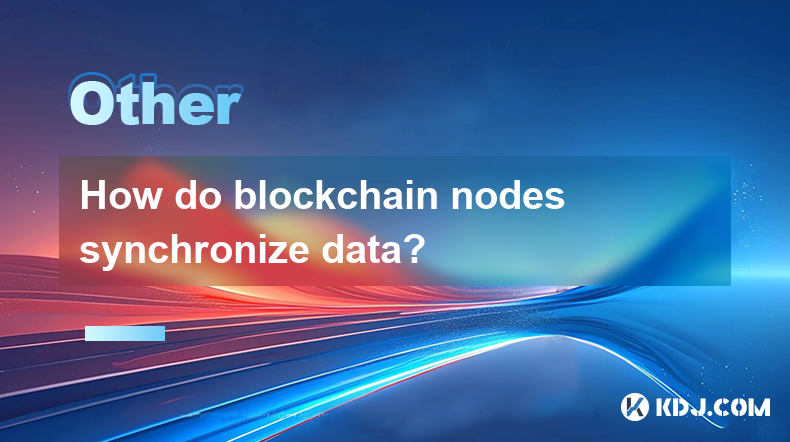
Blockchain nodes synchronize data to ensure that all participants in the network have an up-to-date and consistent view of the blockchain. This process is crucial for maintaining the integrity and security of the blockchain. Let's delve into how blockchain nodes achieve this synchronization.
Understanding Blockchain Nodes
Blockchain nodes are the individual computers or devices that participate in a blockchain network. Each node maintains a copy of the entire blockchain or a portion of it, depending on the type of node. There are different types of nodes, such as full nodes, which store the entire blockchain, and light nodes, which store only a subset of the data.
The Role of Consensus Mechanisms
Consensus mechanisms are the protocols that nodes use to agree on the state of the blockchain. These mechanisms ensure that all nodes reach a common understanding of the blockchain's data. Popular consensus mechanisms include Proof of Work (PoW), Proof of Stake (PoS), and Delegated Proof of Stake (DPoS). The choice of consensus mechanism affects how nodes synchronize data.
Initial Block Download (IBD)
When a new node joins the network, it must first download the entire blockchain or a significant portion of it. This process is known as the Initial Block Download (IBD). During IBD, the new node connects to existing nodes and requests blocks starting from the genesis block (the first block in the blockchain) up to the most recent block.
- Connect to multiple existing nodes to ensure data integrity
- Request blocks starting from the genesis block
- Validate each block and its transactions
- Store validated blocks in the local database
Block Propagation
Once a node has completed the IBD, it enters the block propagation phase. In this phase, nodes continuously receive and validate new blocks as they are added to the blockchain. When a miner successfully mines a new block, it broadcasts the block to its connected peers. These peers then validate the block and, if valid, add it to their local copy of the blockchain.
- Receive new block from connected peers
- Validate the block's transactions and proof of work (or other consensus mechanism)
- Add the validated block to the local blockchain
- Broadcast the new block to other connected peers
Handling Forks and Conflicts
Forks occur when two or more miners find a valid block at the same time, leading to multiple versions of the blockchain. Nodes must handle these forks to maintain synchronization. When a node detects a fork, it follows the consensus rules to determine which chain to accept. Typically, nodes follow the longest chain rule in PoW systems, where the chain with the most cumulative proof of work is considered valid.
- Detect multiple versions of the blockchain
- Apply consensus rules to determine the valid chain
- Reorganize the local blockchain if necessary
- Continue to propagate the valid chain to other nodes
Network Topology and Node Communication
The network topology and how nodes communicate with each other play a significant role in data synchronization. Nodes are typically connected in a peer-to-peer (P2P) network, where each node can connect to multiple other nodes. This decentralized structure helps ensure that data can be efficiently propagated across the network.
- Establish connections with multiple peers
- Use gossip protocols to disseminate information
- Implement network protocols like Bitcoin's P2P protocol for efficient communication
Data Validation and Verification
Data validation and verification are critical steps in the synchronization process. Each node must independently verify the integrity of the data it receives. This includes checking the validity of transactions, ensuring that blocks meet the consensus rules, and verifying the cryptographic signatures.
- Validate transactions against the blockchain's rules
- Check the block's hash and proof of work
- Verify cryptographic signatures
- Ensure the block's timestamp is within acceptable limits
Handling Network Latency and Delays
Network latency and delays can affect the synchronization process. Nodes must be able to handle situations where data arrives out of order or with significant delays. This is managed through buffering and reordering mechanisms, ensuring that nodes can still maintain a consistent view of the blockchain.
- Buffer incoming data to handle out-of-order arrivals
- Reorder data to maintain the correct sequence
- Implement timeout mechanisms to handle delayed data
FAQs
Q: Can a node synchronize data if it is offline for an extended period?
A: If a node is offline for an extended period, it will need to perform an Initial Block Download (IBD) upon reconnecting to the network. This process can take a significant amount of time, depending on the size of the blockchain and the node's internet connection speed. Once the IBD is complete, the node can resume normal synchronization.
Q: How do nodes handle malicious data during synchronization?
A: Nodes use various security measures to handle malicious data. They validate each block and transaction against the blockchain's consensus rules. If a node detects invalid or malicious data, it will reject it and not propagate it to other nodes. Additionally, nodes can implement blacklisting mechanisms to disconnect from peers that consistently send invalid data.
Q: What happens if a node's local copy of the blockchain becomes corrupted?
A: If a node's local copy of the blockchain becomes corrupted, it can attempt to repair the corruption by downloading missing or corrupted blocks from other nodes. If the corruption is severe, the node may need to perform a full Initial Block Download (IBD) to ensure it has a valid and complete copy of the blockchain.
Q: How does the choice of consensus mechanism affect data synchronization?
A: The choice of consensus mechanism significantly impacts data synchronization. For example, in Proof of Work (PoW) systems, nodes must validate the proof of work for each block, which can be computationally intensive. In contrast, Proof of Stake (PoS) systems may have faster synchronization times due to different validation requirements. Each consensus mechanism has its own set of rules and processes that nodes must follow to maintain synchronization.
Disclaimer:info@kdj.com
The information provided is not trading advice. kdj.com does not assume any responsibility for any investments made based on the information provided in this article. Cryptocurrencies are highly volatile and it is highly recommended that you invest with caution after thorough research!
If you believe that the content used on this website infringes your copyright, please contact us immediately (info@kdj.com) and we will delete it promptly.
- Bitcoin (BTC) Price Surges to Two-Week High, Breaking Above $90,000
- 2025-04-23 01:00:12
- Popcat (POP) Price Soars Over 20% As Investors Rush To Buy The Meme Coin
- 2025-04-23 01:00:12
- Bitcoin (BTC) hits six-week highs as US trade war tensions embolden crypto bulls
- 2025-04-23 00:55:12
- An Encouraging Situation for Polygon
- 2025-04-23 00:55:12
- The European Central Bank (ECB) is the alarm about President Trump's policy
- 2025-04-23 00:50:12
- SUBBD Token Aims to Disrupt the $85000000000 Content Creation Market by Targeting OnlyFans
- 2025-04-23 00:50:12
Related knowledge
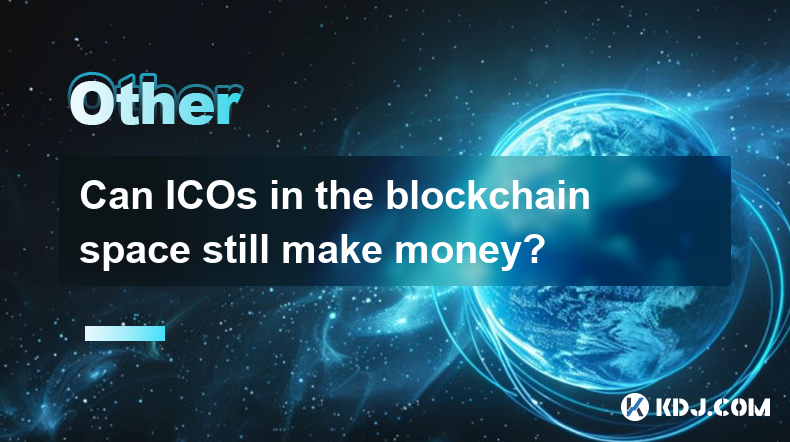
Can ICOs in the blockchain space still make money?
Apr 17,2025 at 08:29pm
The landscape of Initial Coin Offerings (ICOs) in the blockchain space has evolved significantly since their peak in 2017 and 2018. Despite the increased regulatory scrutiny and the rise of alternative fundraising methods like Security Token Offerings (STOs) and Initial Exchange Offerings (IEOs), ICOs can still be a viable way to raise funds and generat...

Can the application of blockchain in supply chain finance bring benefits?
Apr 15,2025 at 04:00pm
Can the application of blockchain in supply chain finance bring benefits? The integration of blockchain technology into supply chain finance has garnered significant attention in the cryptocurrency and financial sectors. This article explores how blockchain can potentially revolutionize supply chain finance, detailing its benefits and providing a compre...
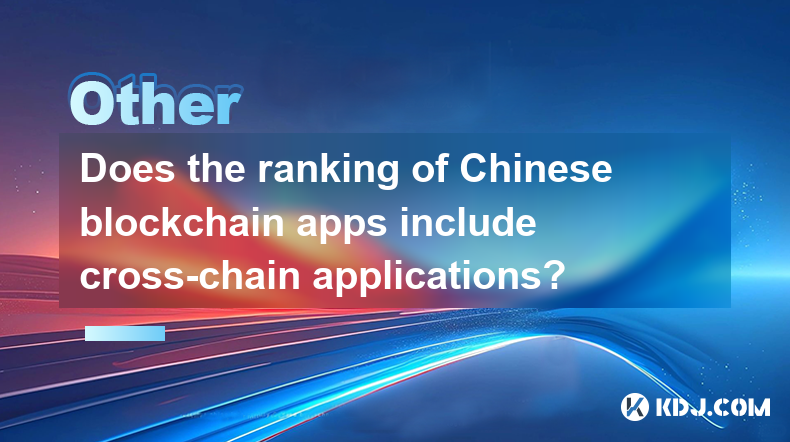
Does the ranking of Chinese blockchain apps include cross-chain applications?
Apr 14,2025 at 04:00pm
The ranking of Chinese blockchain apps is a comprehensive evaluation that takes into account various aspects such as user base, transaction volume, and technological innovation. A pertinent question arises regarding whether these rankings include cross-chain applications. Cross-chain applications, which allow different blockchain networks to interact an...
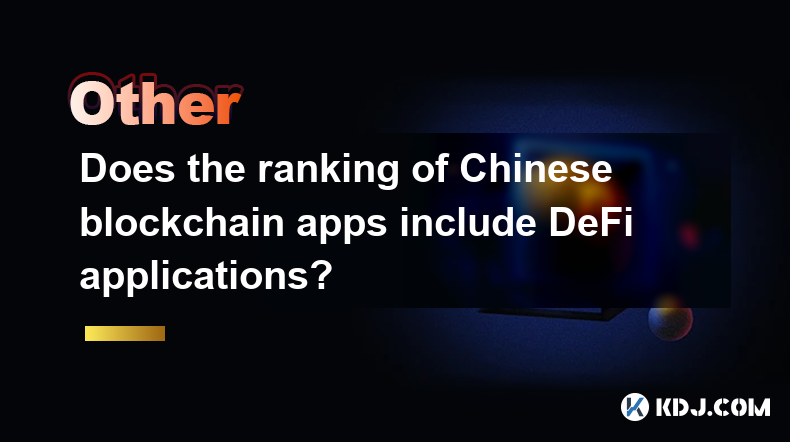
Does the ranking of Chinese blockchain apps include DeFi applications?
Apr 15,2025 at 06:57am
The ranking of Chinese blockchain apps is a comprehensive list that showcases the most popular and influential applications within the cryptocurrency ecosystem. One question that often arises is whether these rankings include DeFi applications. To answer this, we need to delve into the specifics of how these rankings are compiled and what types of appli...
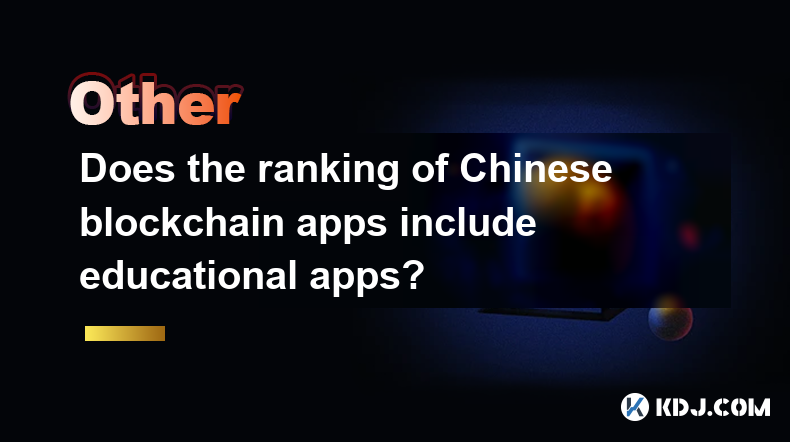
Does the ranking of Chinese blockchain apps include educational apps?
Apr 16,2025 at 03:35am
The ranking of Chinese blockchain apps often includes a variety of categories, from finance and gaming to social networking and beyond. One question that frequently arises is whether these rankings include educational apps. To address this, we need to delve into the specifics of how blockchain apps are categorized and ranked in China, and whether educat...
Does the ranking of Chinese blockchain apps include enterprise-level applications?
Apr 15,2025 at 06:42am
The ranking of Chinese blockchain apps often includes a variety of applications, ranging from consumer-focused to enterprise-level solutions. Understanding the scope and criteria for these rankings is essential to determine if enterprise-level applications are included. This article delves into the specifics of how Chinese blockchain app rankings are co...

Can ICOs in the blockchain space still make money?
Apr 17,2025 at 08:29pm
The landscape of Initial Coin Offerings (ICOs) in the blockchain space has evolved significantly since their peak in 2017 and 2018. Despite the increased regulatory scrutiny and the rise of alternative fundraising methods like Security Token Offerings (STOs) and Initial Exchange Offerings (IEOs), ICOs can still be a viable way to raise funds and generat...

Can the application of blockchain in supply chain finance bring benefits?
Apr 15,2025 at 04:00pm
Can the application of blockchain in supply chain finance bring benefits? The integration of blockchain technology into supply chain finance has garnered significant attention in the cryptocurrency and financial sectors. This article explores how blockchain can potentially revolutionize supply chain finance, detailing its benefits and providing a compre...

Does the ranking of Chinese blockchain apps include cross-chain applications?
Apr 14,2025 at 04:00pm
The ranking of Chinese blockchain apps is a comprehensive evaluation that takes into account various aspects such as user base, transaction volume, and technological innovation. A pertinent question arises regarding whether these rankings include cross-chain applications. Cross-chain applications, which allow different blockchain networks to interact an...

Does the ranking of Chinese blockchain apps include DeFi applications?
Apr 15,2025 at 06:57am
The ranking of Chinese blockchain apps is a comprehensive list that showcases the most popular and influential applications within the cryptocurrency ecosystem. One question that often arises is whether these rankings include DeFi applications. To answer this, we need to delve into the specifics of how these rankings are compiled and what types of appli...

Does the ranking of Chinese blockchain apps include educational apps?
Apr 16,2025 at 03:35am
The ranking of Chinese blockchain apps often includes a variety of categories, from finance and gaming to social networking and beyond. One question that frequently arises is whether these rankings include educational apps. To address this, we need to delve into the specifics of how blockchain apps are categorized and ranked in China, and whether educat...

Does the ranking of Chinese blockchain apps include enterprise-level applications?
Apr 15,2025 at 06:42am
The ranking of Chinese blockchain apps often includes a variety of applications, ranging from consumer-focused to enterprise-level solutions. Understanding the scope and criteria for these rankings is essential to determine if enterprise-level applications are included. This article delves into the specifics of how Chinese blockchain app rankings are co...
See all articles























































































